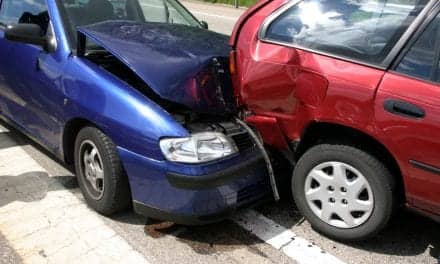Parents of 6-month-old boy hope to prevent a similar tragedy from befalling another family. Healthcare professionals must treat the patient, not the equipment, sources say.
By Alyx Arnett
A 6-month-old boy died following a car seat test and sleep study during which the baby’s oxygen saturation and other vital signs began to plummet. Last week, his parents received a $15 million settlement from Boston Children’s Hospital, the hospital that conducted the sleep study.
According to the family’s attorney, Robert Higgins, the sleep techs turned their attention to the equipment, rather than the patient, when reacting to the sensor data. The patient, 6-month-old Jackson Kekula, previously failed a car seat study at Boston Children’s Hospital because his oxygen saturation dropped during the study. Jackson was sent home with a car bed, and his parents, Ryan and Becky Kekula, were instructed to keep him flat on the bed during travel and bring him back in three months for another test, according to Higgins.
Jackson, like his parents, had achondroplasia, the most common form of dwarfism, which increases the risk of sleep-disordered breathing. “He had some mild sleep apnea. So we were monitoring that, and that’s what the purpose of the sleep study was,” says Ryan Kekula.
For his study at six months, Jackson again was positioned in a car seat after falling asleep. Within approximately 10 minutes, his oxygen saturation began dropping, along with his heart rate, and the electroencephalogram showed brainwave abnormalities, according to Higgins. “These techs perceived this as a mechanical problem with the machinery, and so instead of taking him out of the car seat, because he’s clearly failing it, they spent about 20 minutes, 25 minutes, troubleshooting the machines, thinking it was the machines that weren’t working,” says Higgins.
Eventually, the technicians took Jackson out of the car seat, but after going without oxygen for more than 20 minutes, he suffered a traumatic brain injury that left him on life support. With a poor prognosis, he was removed from life support around 12 days later.
“Instead of looking to the child and saying, ‘What’s going on with the child?’ they look to the machines, and that’s the problem,” says Higgins.
Learning from the Sleep Study Death
The tragedy highlights the need for reforms and improved patient care, says long-time sleep tech and former sleep center director Drew Copeland, RPSGT, CCSH, executive director at ProSleep Solutions, who was not involved in Jackson’s sleep study.
According to Copeland, changes over the past decade, such as a shortage of sleep techs and dropping sleep study reimbursement rates, have led to challenges that can compromise patient safety, such as poorer tech-to-patient ratios and some sleep labs using outdated equipment.
“It’s been so hard to find sleep techs for the past five years that [sleep medicine hiring managers] have lowered the bar to anyone who’s had any experience. And I think it should be the opposite. I think the field needs to be elevated,” says Copeland. “They should have all the skills of a respiratory therapist, an EKG tech, and an EEG tech all wrapped into one.”
Copeland also offers advice for enhancing patient safety without additional resources.
He says it should be common practice for sleep techs to thoroughly review patients’ medical history before patients come in for their sleep studies so techs know how much risk is involved, including knowing the impact of certain medication or breathing implications of conditions like achondroplasia.
Copeland says it is common for techs to assume equipment malfunction when they encounter abnormal values on the screen; he’s seen it himself both as a tech and while managing sleep labs. However, in a situation involving someone with “pretty significant comorbidities,” Copeland says if that person’s chart had been thoroughly reviewed, they “should know [those values are] a real possibility.”
Techs also should have a comprehensive understanding of how to troubleshoot the equipment, including knowing if they’re getting a valid plethysmography signal, as in Jackson’s case. “It should be part of every tech’s training,” he says, adding that some polysomnography manufacturers note signal quality with “green,” “yellow,” or “red” indicator lights for easy equipment diagnosis.
What’s more, steps can be taken in advance to mitigate equipment malfunctioning. Copeland says all equipment should be tested and calibrated on a regular basis, and the cadence of which it should be done should be listed in the labs’ policy and procedure manual. He says a system also should be in place for when something isn’t working to ensure it gets repaired or replaced.
Once a sensor starts showing signs of wear, it should be replaced—something Copeland says isn’t done often enough in some sleep labs. “Once you start using tape and stuff, it’s going to be far more cost-effective to regularly replace your sensors so that you have optimal, working sensors than having a situation happen like this,” he says.
Additionally, he points out the dangers of scoring on the fly—or scoring a sleep study while the recording is in progress. Every time a tech uses the look-back screen to score, they’re not looking at the live feed, potentially missing a life-threatening cardiac arrhythmia or seizure activity. “So scoring on the fly I think can be dangerous, but some of that can also be fixed with simple things like having a second monitor so you can always have a live feed there, having better alarms built into the system so that you know that the patient’s SpO2 has dropped,” he says.
According to a statement from Boston Children’s Hospital, there have been several improvements implemented in how its sleep studies are conducted. These include a revision of responsibilities of team members, hands-on skills training and education for sleep lab staff, enhanced sleep technologist orientation and ongoing training, modification of the ordering and triage process that assesses potential risks to patients, and a review of the environment in which testing is conducted.
“We express our deepest condolences and apologize to the family for the loss of their son,” says the statement from the hospital. “Following this incident, we immediately stopped all sleep studies and began a thorough review of what occurred. We examined our policies, staff training, competencies, and all systems that support sleep lab studies, including scheduling, ordering, triaging, and performing the actual study…We continue to closely monitor the care delivery of sleep studies to ensure the highest levels of quality and safety for our patients and their families. We maintain our system-wide commitment to prioritizing and improving quality and safety as the foundation of all the care provided at Boston Children’s Hospital.”
Leaving the neonatal intensive care unit (NICU), Ryan and Becky Kekula found one of the most helpful pieces of advice given to them as new parents was to remain calm when an alarm goes off and instead focus on their son. “When we got to leave the NICU, that’s what was stressed, and it felt like that might have been missed in the incident with Jackson with so much focus on the equipment and not enough focus on the patient,” says Ryan Kekula.
The couple declined to sign a non-disclosure agreement to share their story, which they hope can create change to prevent similar tragedies from happening to other families.
Photo caption: Ryan, Becky, and Jackson Kekula
Photo credit: Elizabeth Talbot Photography




